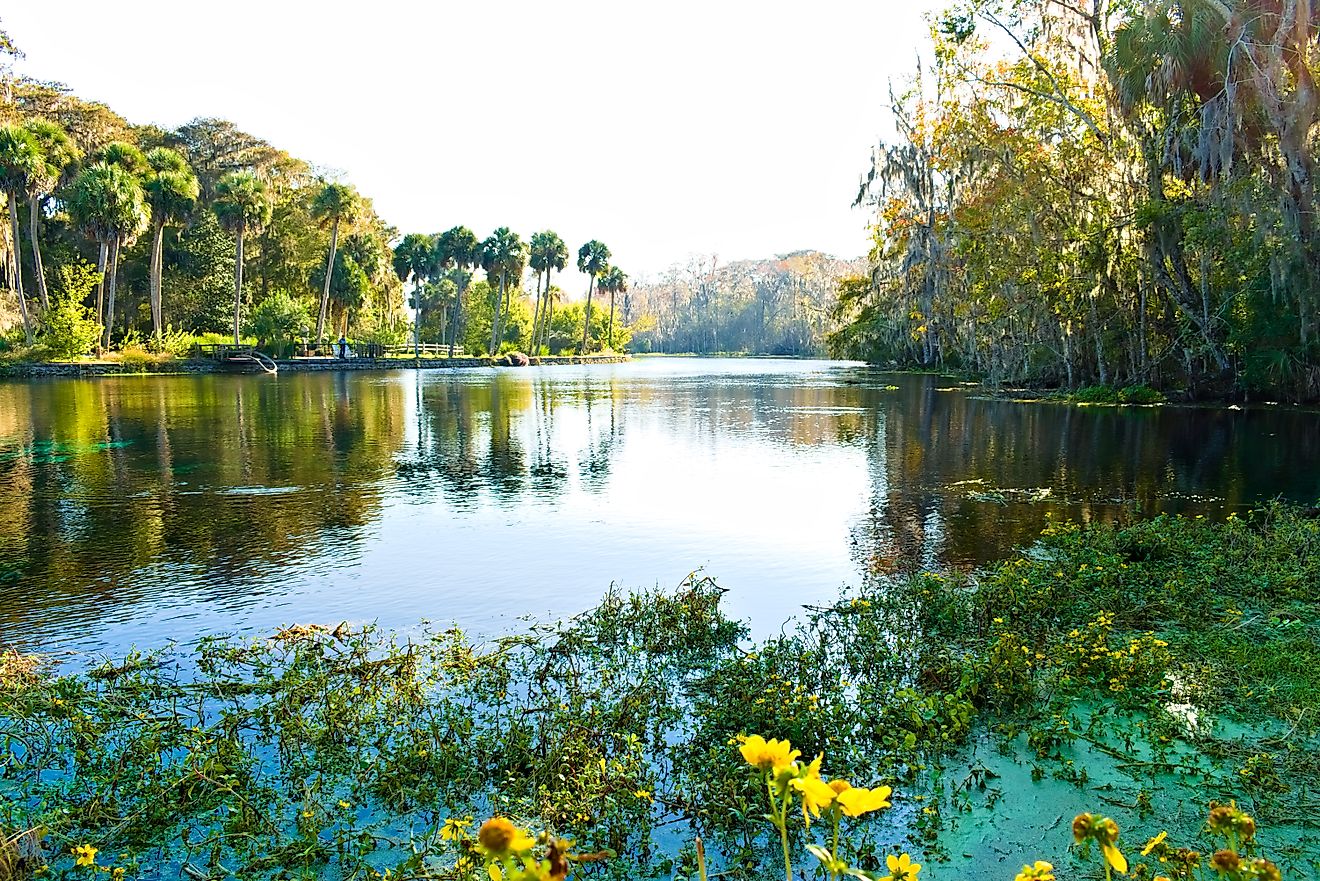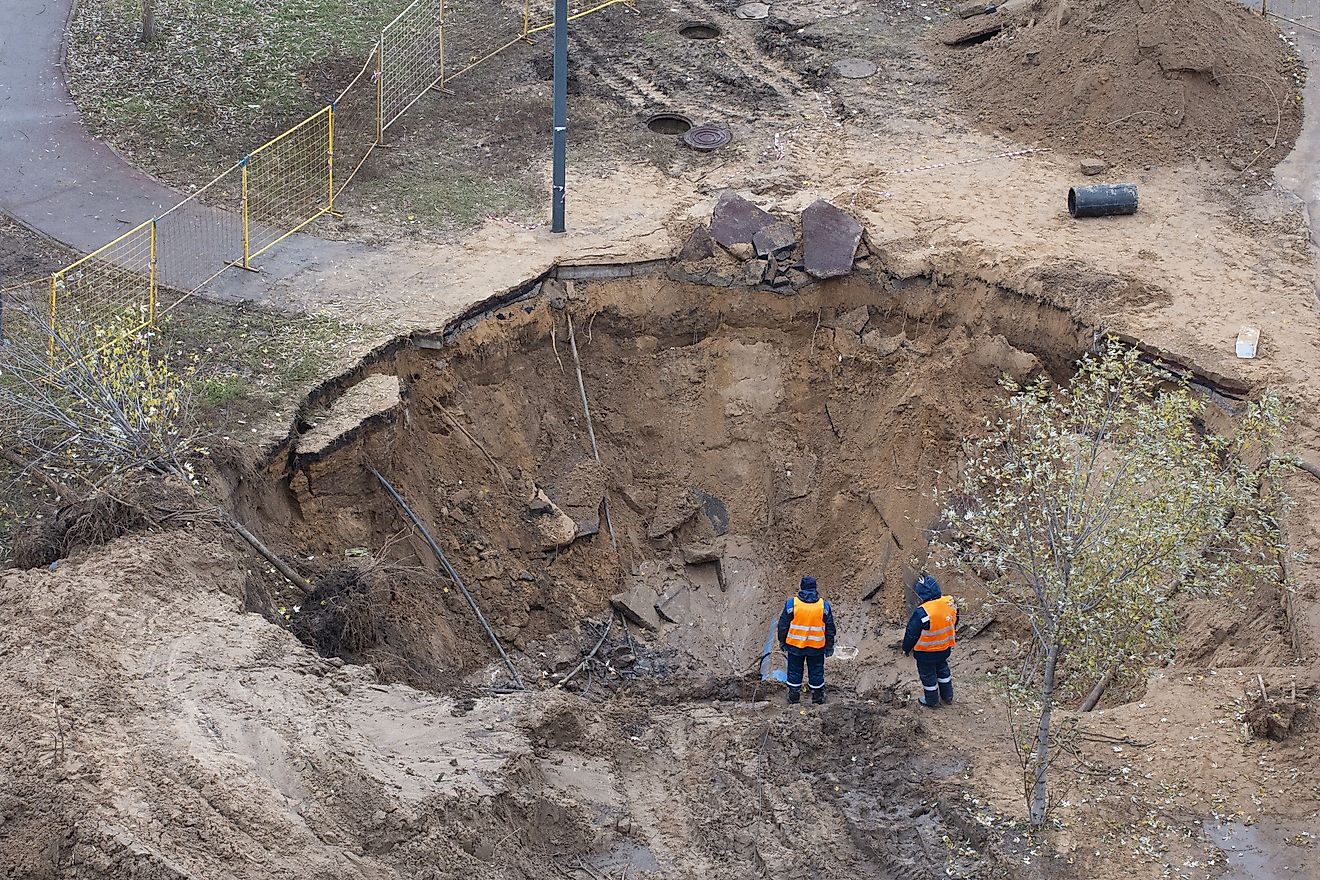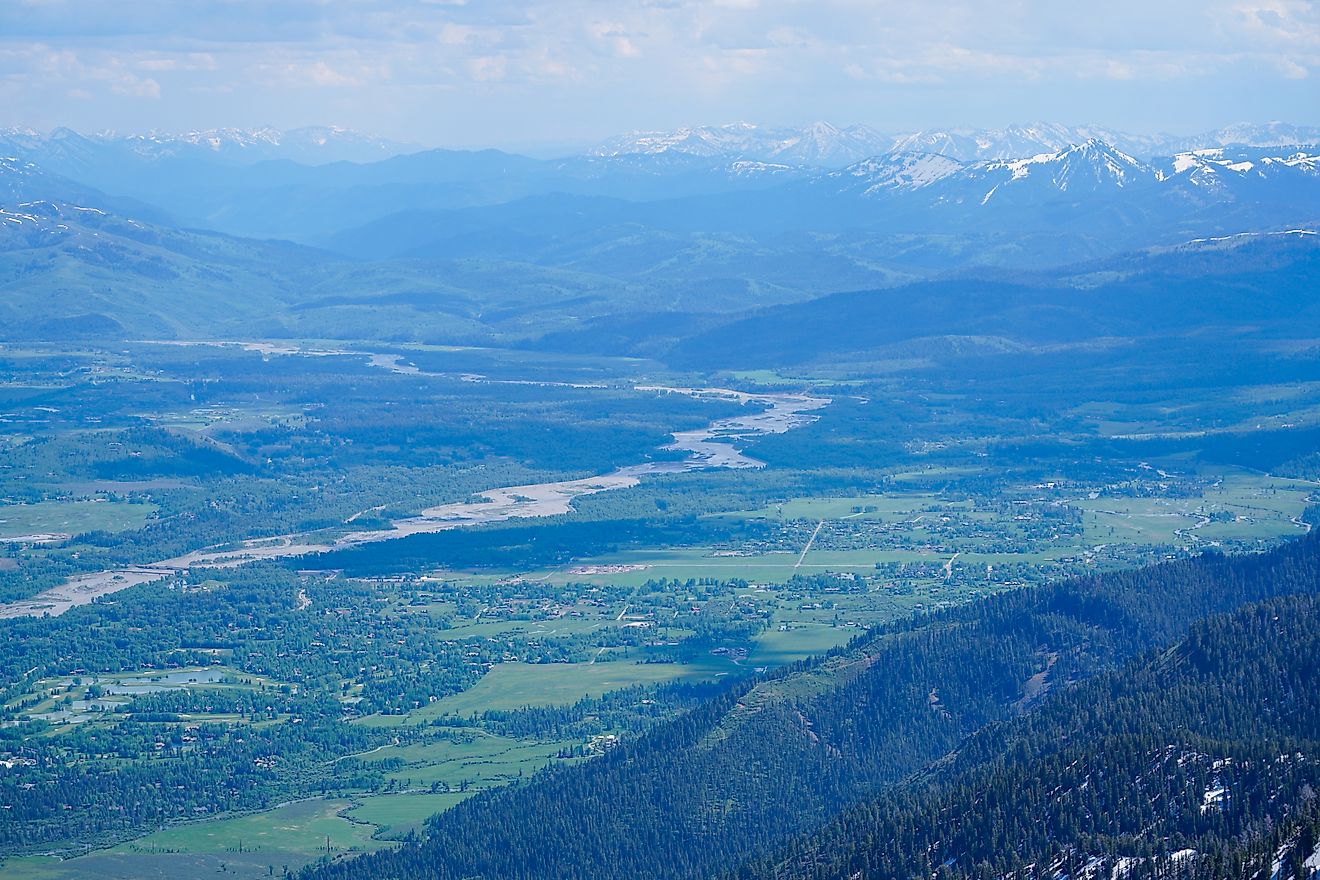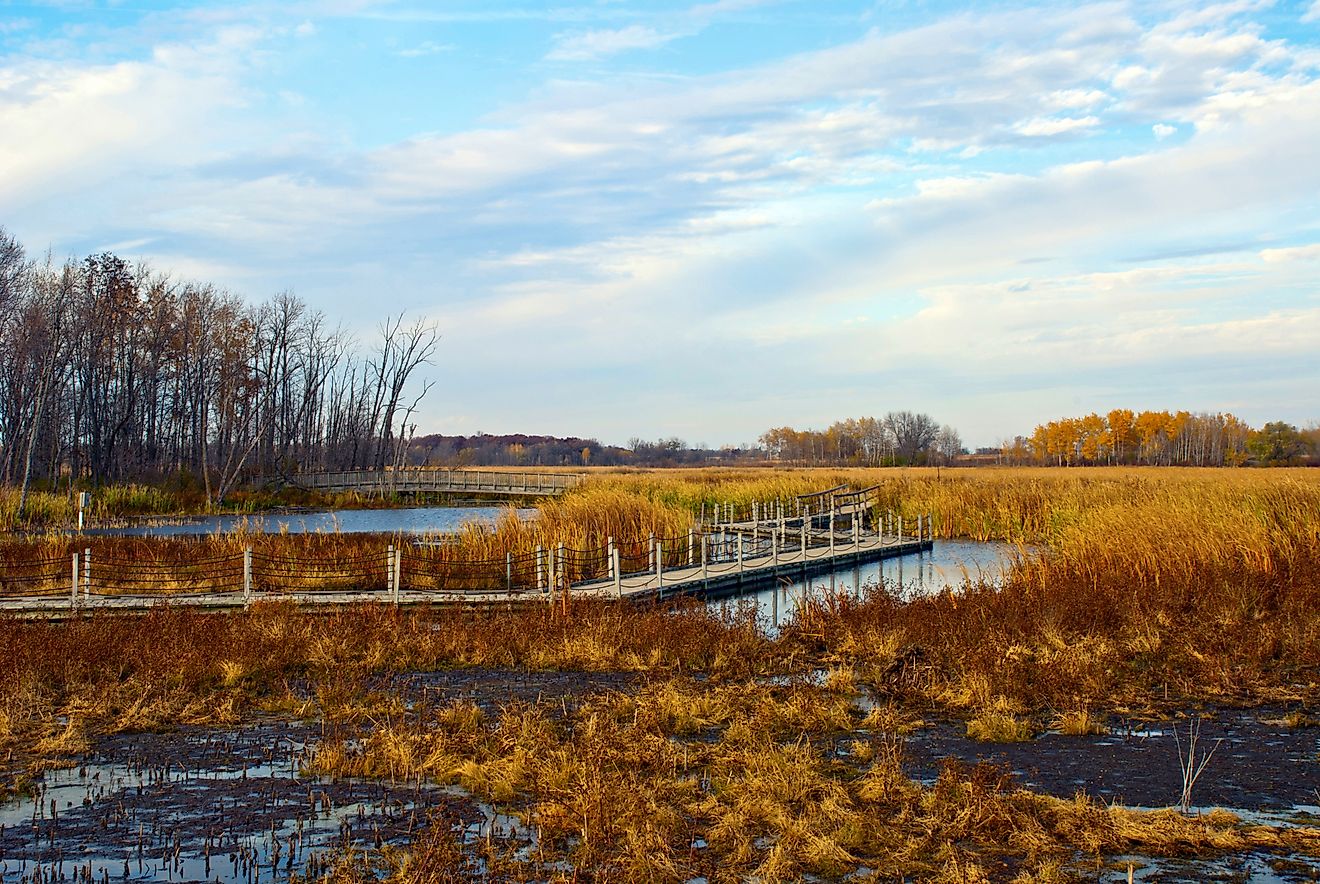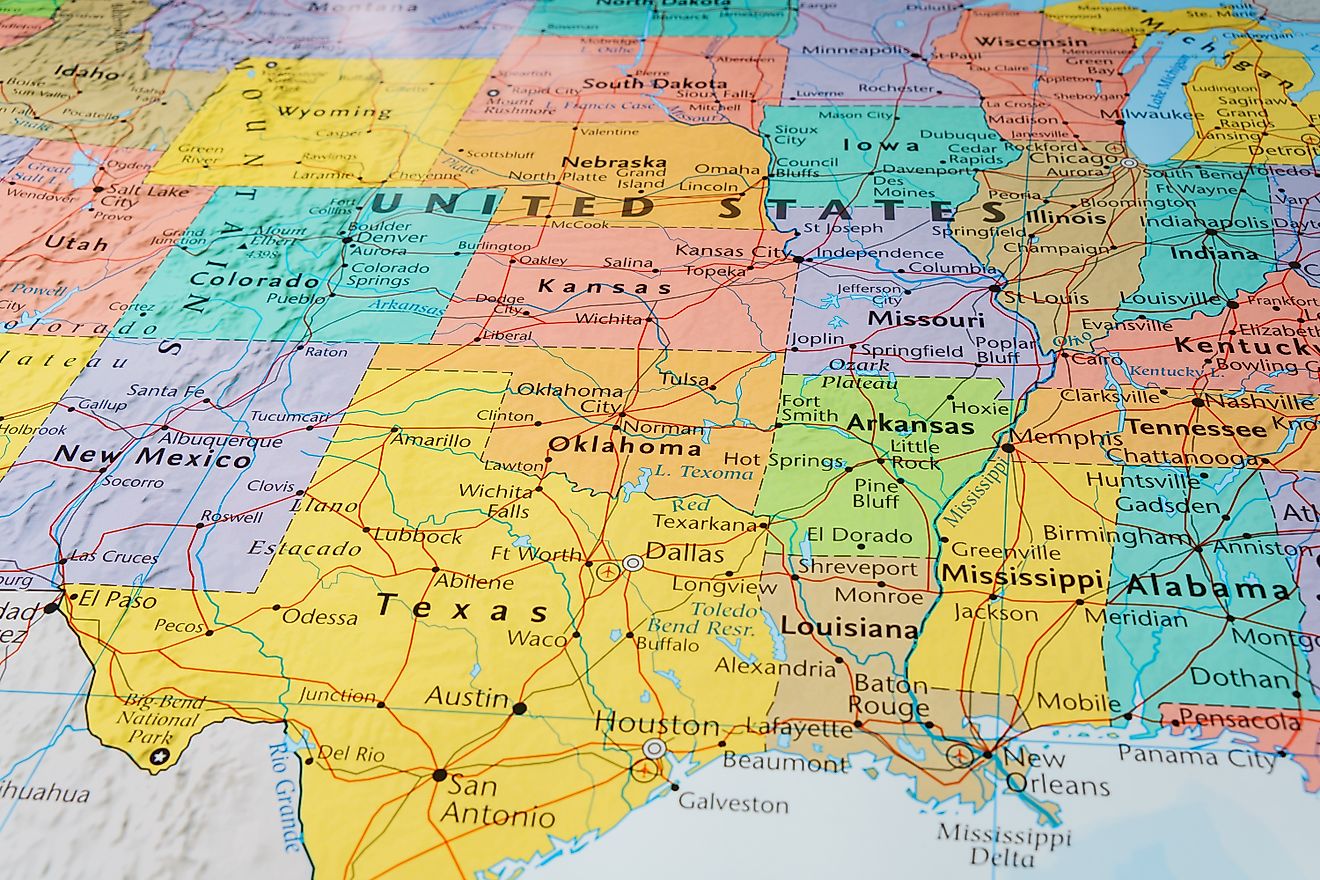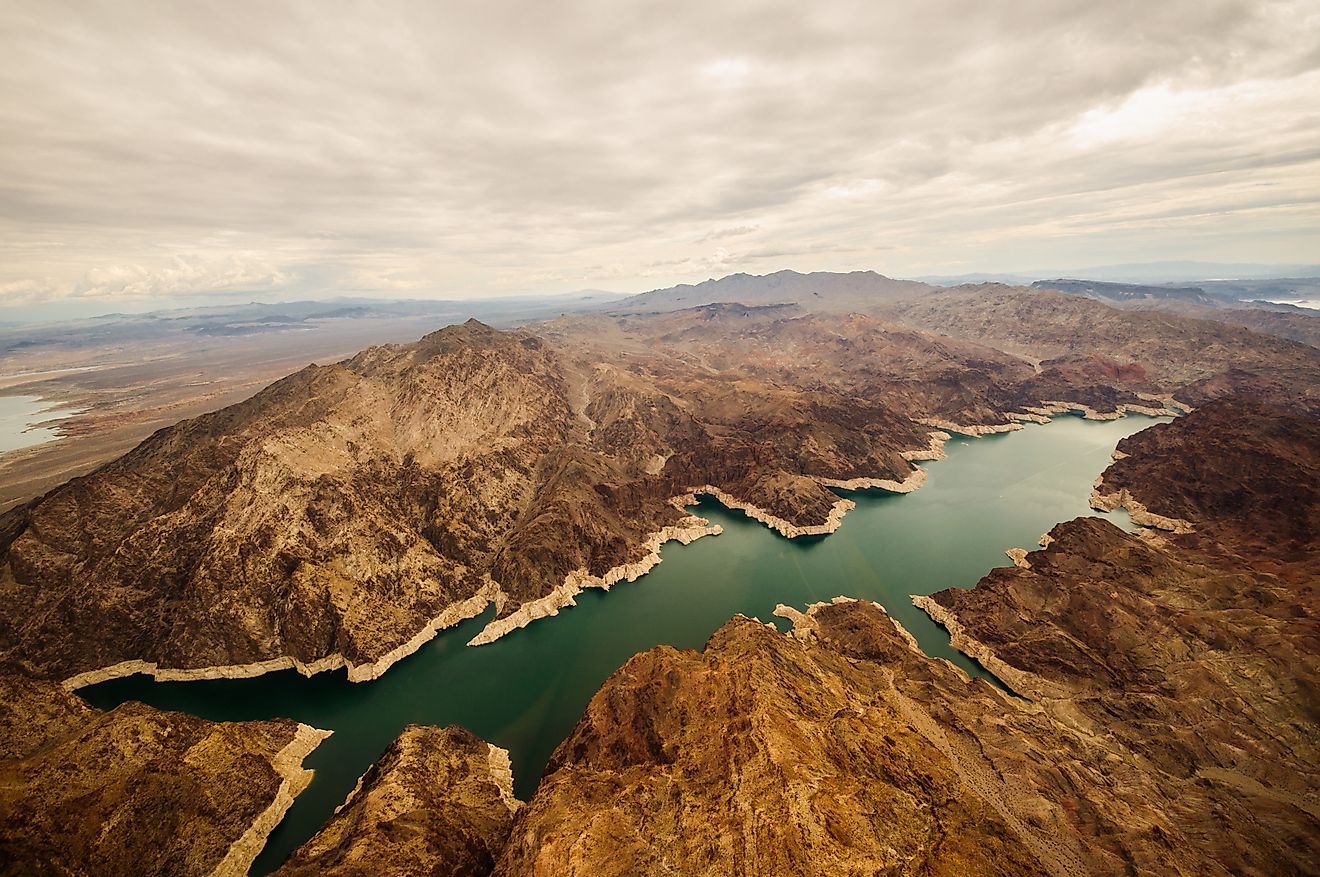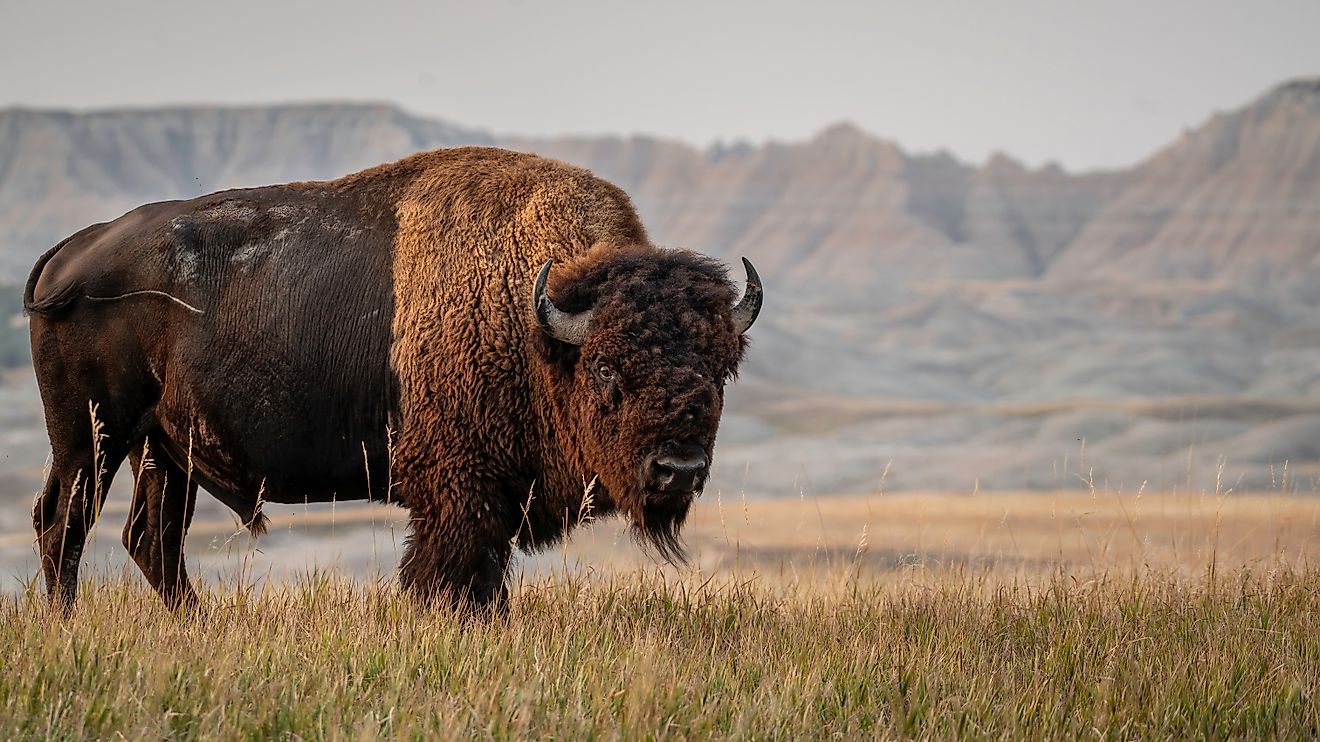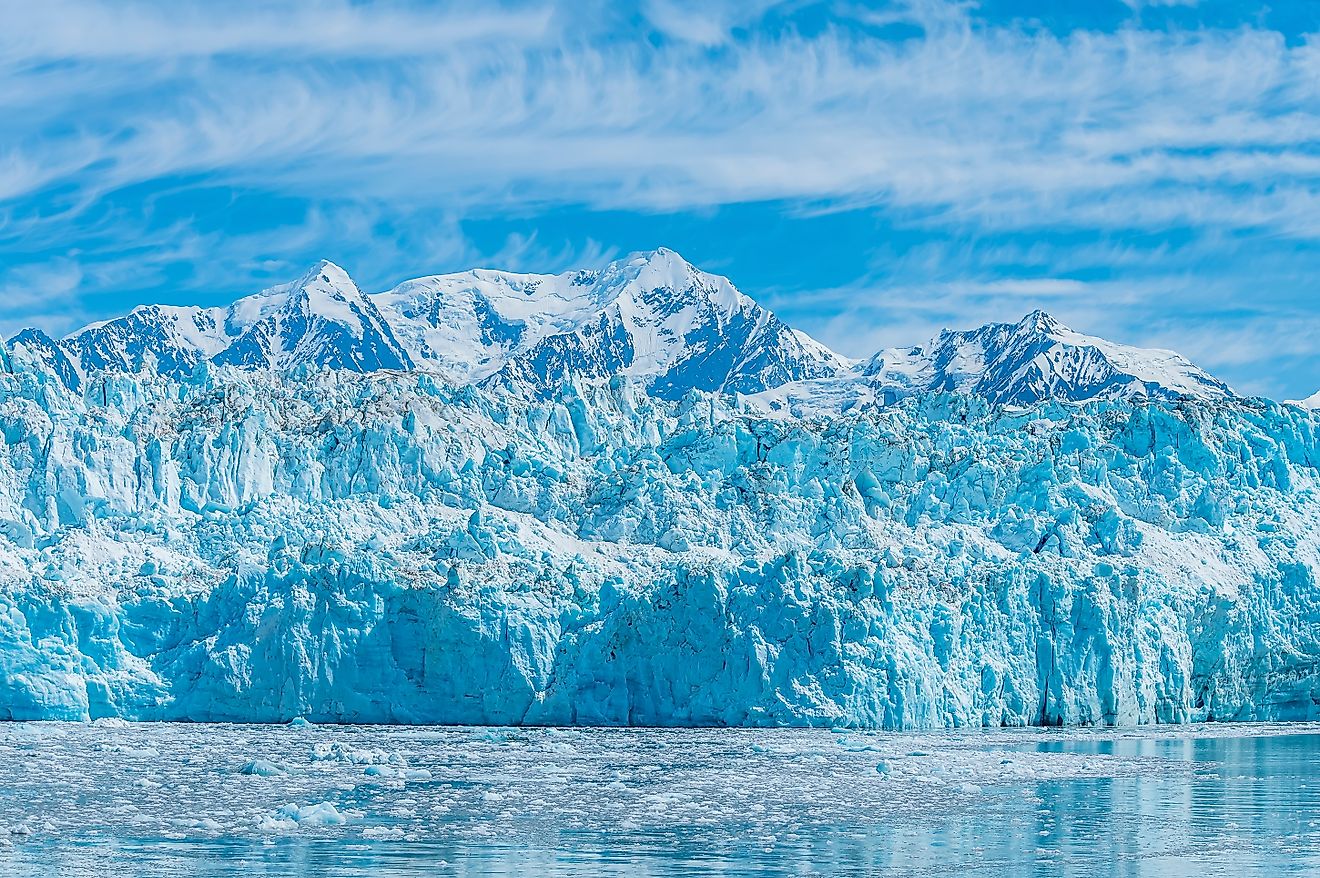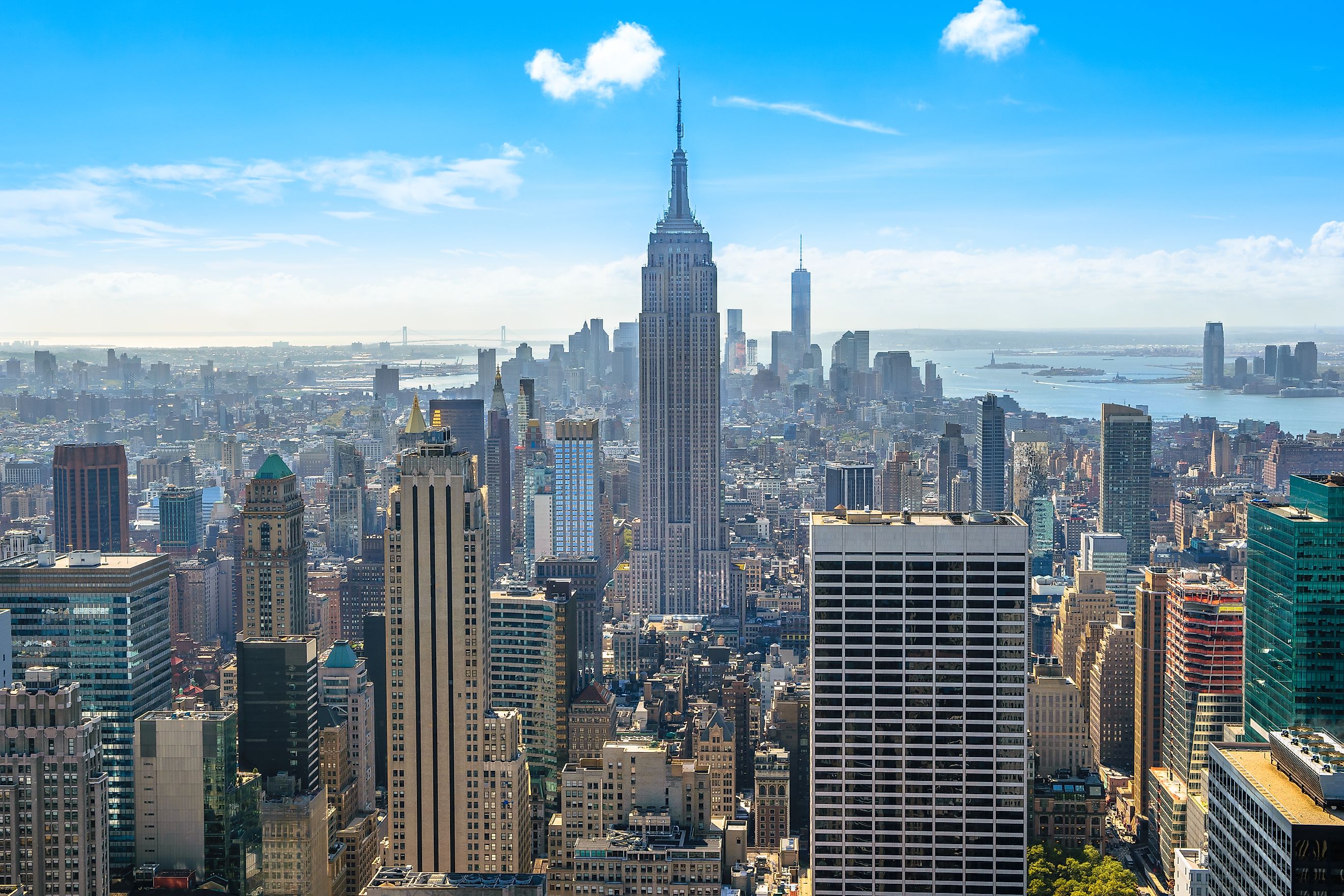
The Largest Downtown Areas in The US
Downtowns are where a city’s energy comes alive. They pulse with history, innovation, and everyday life, blending commerce, culture, and community in ways few other places can. Each skyline, street, and public space tells a story of how a city has grown, adapted, and thrived over time. Some downtowns are famous for towering skyscrapers and bustling offices, while others shine with arts, music, and historic charm.
These urban centers draw workers, residents, and tourists, shaping the identity and economy of their cities. Take a look at the eight largest downtown areas in the US and what makes each stand out.
Midtown Manhattan, New York City

-
Office Space: ~298 million sq ft
-
Highlights: Times Square, Broadway theaters, Rockefeller Center, Empire State Building
Midtown Manhattan is the nation’s largest central business district and arguably the most famous downtown in the United States. Its streets hum with activity day and night, hosting office workers, tourists, shoppers, and street performers. The area blends historic landmarks with modern towers, creating a skyline recognized around the world. From high-end retail on Fifth Avenue to the neon lights of Times Square, Midtown is both a financial powerhouse and cultural hub.
Midtown Manhattan is a center for innovation and business. Media giants, advertising agencies, financial firms, and tech startups all have headquarters or offices here, creating a dynamic mix of industries. Skyscrapers such as the Empire State Building and One Vanderbilt demonstrate both historic and modern architectural achievement, while Grand Central Terminal remains a hub of transit and design. Midtown is also home to Times Square, Broadway theaters, and the Museum of Modern Art, making it a place where commerce, culture, and tourism thrive side by side.
Chicago
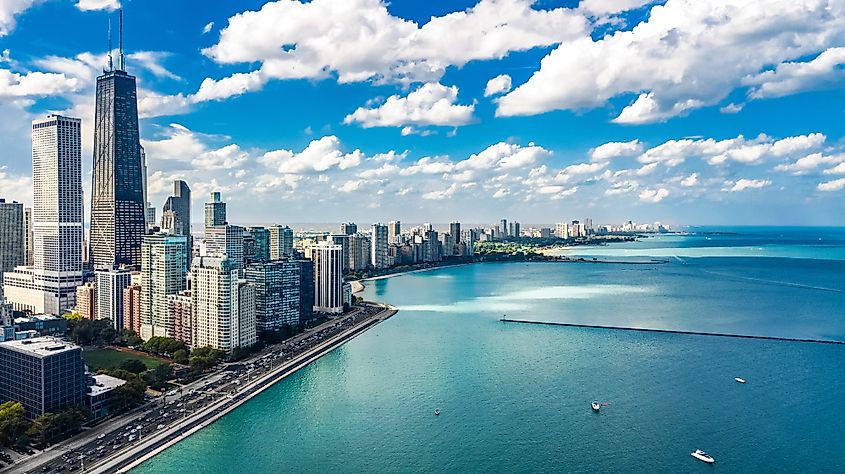
Chicago skyline aerial, city of Chicago downtown skyscrapers and lake Michigan cityscape, Illinois.
-
Office Space: ~144 million sq ft
-
Highlights: Willis Tower, Millennium Park, the Art Institute of Chicago
Chicago’s Loop represents the heart of the Midwest’s urban landscape and a blueprint for modern city planning. It is a historic and economic hub where commerce, culture, and architecture converge. The Loop is recognized globally as the birthplace of the modern skyscraper, with architectural marvels such as the Willis Tower, the Tribune Tower, and the Chicago Board of Trade building defining its skyline. Its streets are alive with business professionals, tourists, and local residents, creating a vibrant, 24/7 energy.
The district is home to major corporate headquarters including United Airlines, Boeing, and Morningstar, as well as key financial institutions and law firms. Cultural landmarks such as the Art Institute of Chicago, the Chicago Theatre, and the Chicago Symphony Orchestra bring arts and entertainment to the urban core. Millennium Park serves as an open-air gathering space, featuring iconic public art such as the Cloud Gate sculpture and the Jay Pritzker Pavilion, while the Chicago Riverwalk allows for scenic strolls along the city’s waterways. The Loop also offers diverse dining options, boutique shopping, and historical landmarks that reflect the city’s rich past.
Chicago’s downtown exemplifies the balance between historic preservation, modern commerce, and public life. Its streets, parks, and buildings provide a multifaceted experience, making the Loop a model of urban vitality in the American Midwest.
Washington, D.C.
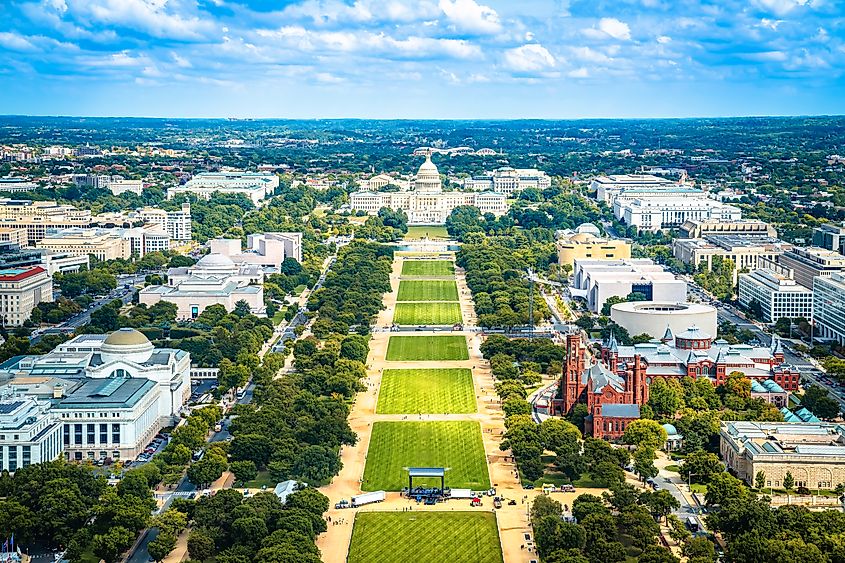
-
Office Space: ~106 million sq ft
-
Highlights: The National Mall, Smithsonian museums, the White House
Downtown Washington D.C. stands out for its mix of governance, history, and urban life. Alongside the White House and federal offices, visitors encounter the Smithsonian museums, Kennedy Center theaters, and vibrant shopping districts.
The National Mall stretches through the heart of downtown, featuring landmarks such as the Lincoln Memorial, Washington Monument, and the US Capitol. The area draws federal employees, advocacy groups, and tourists, while restaurants, galleries, and seasonal festivals energize the streets. Parks and public squares offer space to relax amid the city’s activity. Downtown D.C. showcases American history while supporting modern commerce and civic life.
Houston
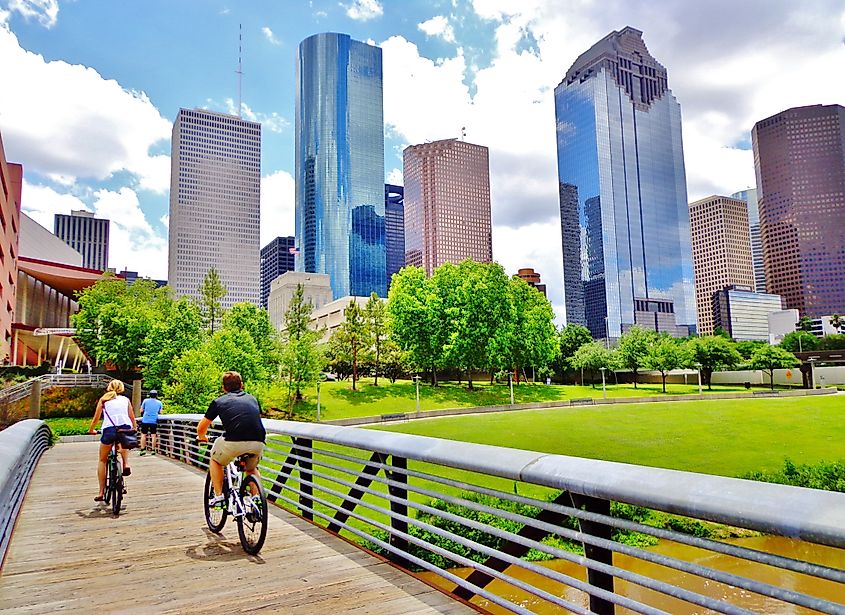
-
Office Space: ~40 million sq ft
-
Highlights: Theater District, Discovery Green, Minute Maid Park
Houston’s downtown anchors the city’s energy industry while maintaining a lively cultural and recreational scene. Its streets are lined with corporate headquarters, museums, theaters, and sports venues.
The area has evolved into a major hub for business and entertainment. Skyscrapers house energy companies, law firms, and financial institutions, while venues like the Toyota Center and Wortham Theater Center host concerts, basketball games, and performances. Public spaces such as Discovery Green and Market Square Park provide places for festivals, fitness classes, and community gatherings. Houston’s downtown illustrates how commerce, culture, and leisure coexist in a dynamic, modern urban core.
San Francisco
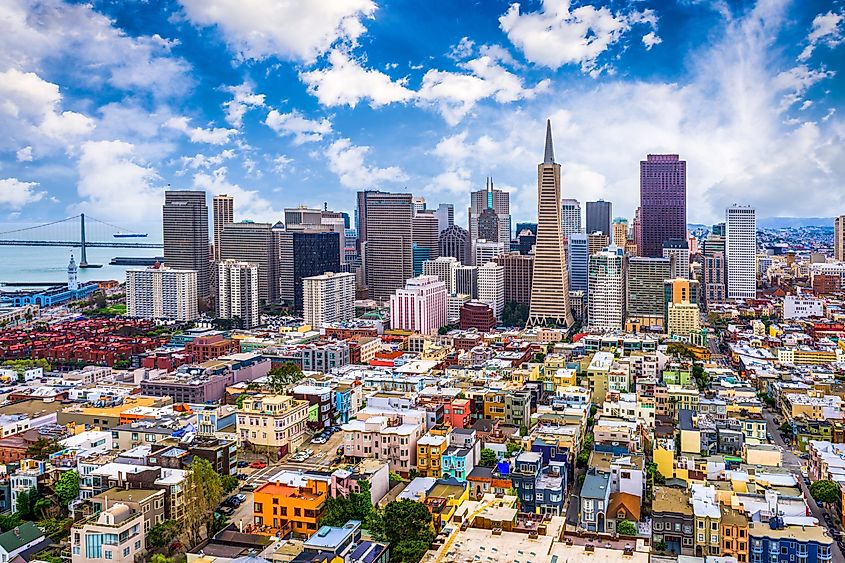
-
Office Space: ~53 million sq ft
-
Highlights: Financial District, Union Square, tech campuses
San Francisco’s downtown is compact yet influential, combining business, culture, and scenic landscapes. The Financial District is home to high-rise offices, tech campuses, and iconic historic buildings, creating a skyline that reflects both innovation and heritage.
Beyond its corporate hubs, downtown offers a rich cultural scene. Historic theaters, boutique shops, and a variety of restaurants line its streets. The city’s signature hills and cable cars make exploring the area a distinctive experience. Union Square draws shoppers and hosts cultural events, while the Embarcadero provides waterfront walks with views of the Bay Bridge and piers.
Center City, Philadelphia
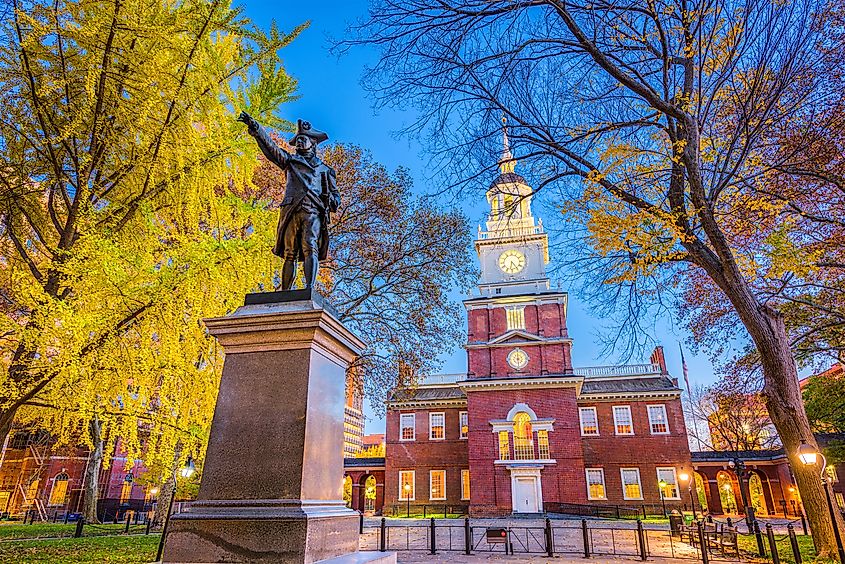
-
Office Space: ~41 million sq ft
-
Highlights: Independence Hall, Liberty Bell, Rittenhouse Square
Philadelphia’s downtown, known as Center City, merges the city’s colonial roots with its role as a modern commercial hub. The area preserves historic architecture from the 18th century while hosting corporate headquarters, luxury hotels, high-end retail, and cultural institutions. Walking through Center City reveals cobblestone streets and historic row houses alongside gleaming office towers.
Landmarks such as the Liberty Bell, Independence Hall, and Christ Church draw history enthusiasts, while theaters along the Avenue of the Arts showcase Broadway productions and concerts. Rittenhouse Square offers manicured gardens and public art amid the urban bustle. Philadelphia’s downtown balances commerce, culture, and history in a uniquely dynamic way.
Seattle
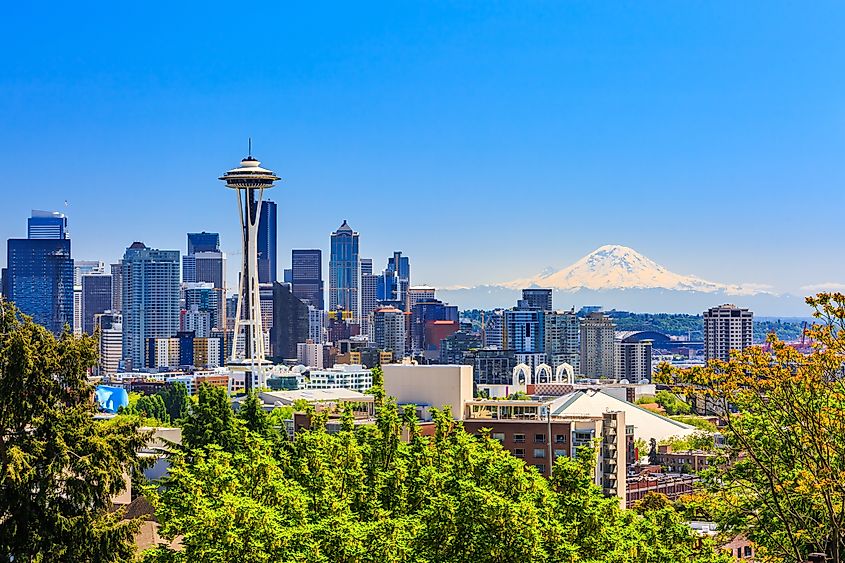
Seattle downtown skyline and Mt. Rainier, Washington.
-
Office Space: ~48 million sq ft
-
Highlights: Pike Place Market, Amazon campus, waterfront parks
Seattle’s downtown blends urban growth with natural beauty. Skyscrapers overlook Puget Sound and the surrounding mountains, offering a downtown experience unlike any other in the US.
Seattle’s downtown has a strong tech presence alongside retail, entertainment, and cultural venues. Pike Place Market remains a historic and tourist favorite, while modern tech campuses and corporate offices dominate the skyline. Waterfront parks and ferries provide scenic access to the water, making the area attractive for workers and visitors.
Boston
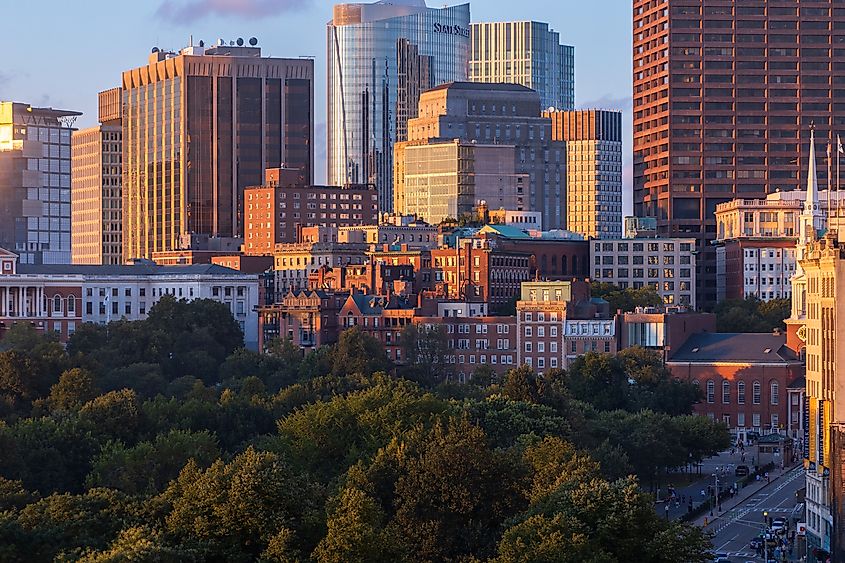
-
Office Space: ~66 million sq ft
-
Highlights: Freedom Trail, Faneuil Hall, Boston Common
Boston’s downtown is steeped in history and innovation. From colonial-era streets to modern office towers, it showcases the city’s dual identity as a historic and academic hub.
Downtown Boston offers a walking history lesson. The Freedom Trail leads through key Revolutionary War sites, while modern office buildings house finance, healthcare, and tech companies. Boston Common provides green space amid dense urban streets. Universities and cultural institutions add to the intellectual and creative energy of the area, making it a downtown that attracts both students and professionals.
Unique Charm of America's Cities
Downtown areas are not just business districts. They are cultural engines, tourist destinations, and historical archives. They define the identity of their cities, shaping how locals work, live, and interact. Skyscrapers, historic landmarks, museums, theaters, and parks all coexist in downtowns, creating a blend of commerce, culture, and community. These areas demonstrate the evolution of American cities, reflecting industrial growth, urban planning, and civic life.
For travelers, professionals, or history buffs, these downtowns offer an unparalleled mix of experiences. Each city tells its own story through its streets, skyline, and people. Walking through them provides insight into the economic, cultural, and social life of the United States.
America's Largest Downtowns
| Downtown Area | Office Space (sq ft) | Key Highlights | Employment or Economic Weight |
|---|---|---|---|
| Midtown Manhattan | 298 million | Times Square, Empire State, Broadway | Largest job hub in the US |
| Downtown Chicago | 144 million | Willis Tower, Millennium Park | Midwest commerce and culture hub |
| Downtown Washington, D.C. | 106 million | National Mall, Smithsonian, White House | Federal and tourist center |
| Downtown San Francisco | 53 million | Financial District, tech campuses | Tech and finance powerhouse |
| Center City Philadelphia | 41 million | Liberty Bell, Independence Hall | Blend of history and business |
| Downtown Boston | 66 million | Freedom Trail, Boston Common | Academic and historical hub |
| Downtown Seattle | 48 million | Pike Place Market, Amazon | Tech innovation and waterfront appeal |
| Downtown Houston | 40 million | Theater District, Discovery Green, sports venues | Energy and cultural core |
